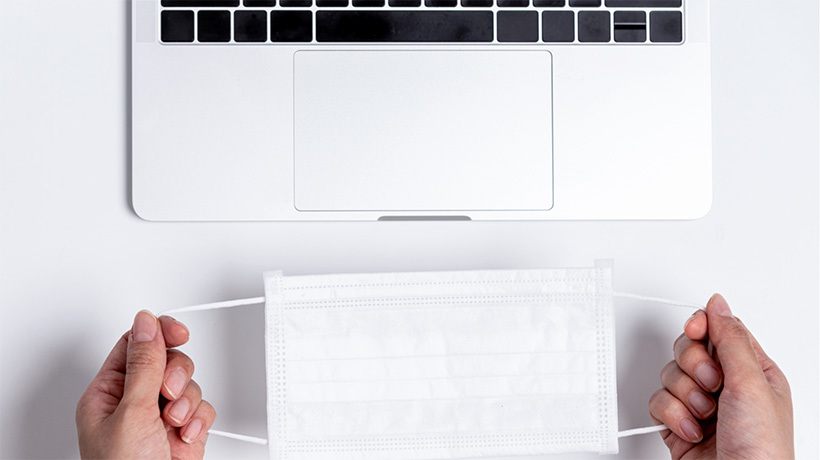Subject Matter To Be Covered During Sensitivity Training
Workplace sensitivity training helps employees understand different backgrounds and identities as well as recognize their own biases and wrongdoings. Training also cultivates a safe environment where no discrimination or harassment is acceptable. Awareness and empathy are fundamental to a team's success and impeccable work relationships. During any sensitivity program, specific topics should be discussed. The goal is to create a culture of openness and build trust between coworkers.
8 Crucial Topics To Discuss During Sensitivity Education
Diversity, Equity, And Inclusion
Any company benefits from hiring diverse people who bring their unique flare and experience to the workplace. However, developing a diverse way of thinking is even more important. This leads to equity, which shouldn't be confused with equality. The latter means that all people should be treated the same. On the other hand, equity is about adjusting our treatment in correspondence with someone's unique background. Employees should know their voice is heard and respected and their company isn't leaving them behind because of their diverse characteristics. For example, the LGBTQ+ community is highly underrepresented at the management level. Only 1.6% of managers identify as LGBTQ+ women, while 2–3% identify as LGBTQ+ men.
Bullying And Harassment
According to a survey, 36% of bullied employees at work decide to end their employment. People should feel safe and protected at work without being in constant fear. Additionally, all professionals must understand the meaning of bullying, discrimination, harassment, and victimization. Employees, managers, and supervisors must realize that actions have consequences, even outside work hours. For example, exhibiting negative behavior on social media accounts. Moreover, companies need to stand by victims and resolve any given matter. Their goal should be cultivating a trusting environment where each employee is in it for the long run and knows that upper management will support them no matter what.
Racism And Stereotypes
Often, people don't realize how problematic and hurtful their language and behavior are. As part of workplace sensitivity training, the topics of racism, stereotypes, and unconscious bias should be at the forefront. Companies must provide every employee with a handbook regarding harmful and unacceptable language. A diversity officer might also be needed to help discuss racial intolerance. More importantly, employees from different racial backgrounds might want to share negative experiences and educate the rest. However, racism is only one aspect of the spectrum since stereotypes and unconscious bias are also commonly expressed in the workplace. Identifying and correcting them is vital for diverse coworkers to feel secure. Finally, employees must be aware of microaggressions and how they affect others.
Ageism
Ageism can be expressed in two main ways: through patronizing older employees and underestimating younger coworkers and their abilities. For example, older employees might be teased for their slower understanding of technology and excluded from potential promotions. On the other hand, younger people are commonly not taken seriously due to the assumption of limited knowledge and practical experience. In workplace sensitivity training, it's essential to address bias and discuss the benefits of working in a multigenerational office. The Learning and Development team can create technology courses for employees who struggle. Additionally, coworkers of all ages should collaborate on projects and share their varying viewpoints. As a result, team members can bond and get rid of any age bias.
Allyship
Anna Corbitt defines an ally as "someone who supports the cause of a marginalized group—women, people of color, people with disabilities, people in the LGBTQ+ community, people with low income, etc.—and uses their privilege to learn from that group and amplify their cause." Tolerance alone isn't enough. People in positions of power must support and advocate for marginalized individuals. They should listen closely to their unique experiences and practice empathy. Also, they must take action to battle bias, discrimination, and inequities. For example, they need to address microaggressions and promote diverse people to positions of power. As a result, they build a fair environment where employees feel secure and have higher engagement.
Religion And Spirituality
Employees should be aware of their religious rights. In diverse working environments, it's natural that people of different religious backgrounds will be working together. Thus, they must learn to respect different religions and beliefs. Laws and guidelines have been enforced in an attempt to help employees exercise their religious rights. For example, they can read holy texts during their breaks, wear religious attire, and practice daily prayers. Consequently, companies encourage openness and create feelings of respect, regardless of one's religion. They also support their employees' well-being since many people find solace in their religious or spiritual practices. In sectors like healthcare, counseling, and schools, having diverse workers helps customers and learners engage more efficiently. The significance of this matter is further supported by data projecting that, by 2050, 2.3 billion more people will be openly affiliated with religions.
Bystander Intervention
A bystander is someone who either witnesses inappropriate and harassing behavior or learns from a third party about such demeanor. For example, someone can directly observe racist behavior or overhear a hurtful comment. To intervene means to step in at the exact moment you notice an incident of harassment. Identify it immediately, diffuse a possibly dangerous situation, and support the victim. But stepping in isn't always the safest course of action. Another solution to such issues is to talk to the victim afterward and involve third parties in the conversation. You can gather more evidence of wrongdoings as a team and bring them to management's attention. They will document and investigate every harmful action so it won't be repeated. The ultimate goal is to build a culture of accountability where no misconduct goes unchecked.
Conclusion
Cultivating a non-discriminatory and highly empathetic working environment makes professional relationships stronger. Through self-reflection and workplace sensitivity training, employees can recognize their unconscious biases. As a result, instances of ageism, racism, bullying, religious bias, and harassment will decline. Allyship will promote corporate relationships even further and assist marginalized groups to climb the ladder and reach positions of power. Last but not least, every employee has the power to diffuse a harmful situation by speaking up and reporting it to the upper level. These factors will strengthen inclusion and equity in the workplace and help diverse groups feel secure expressing themselves and their beliefs to their coworkers.









